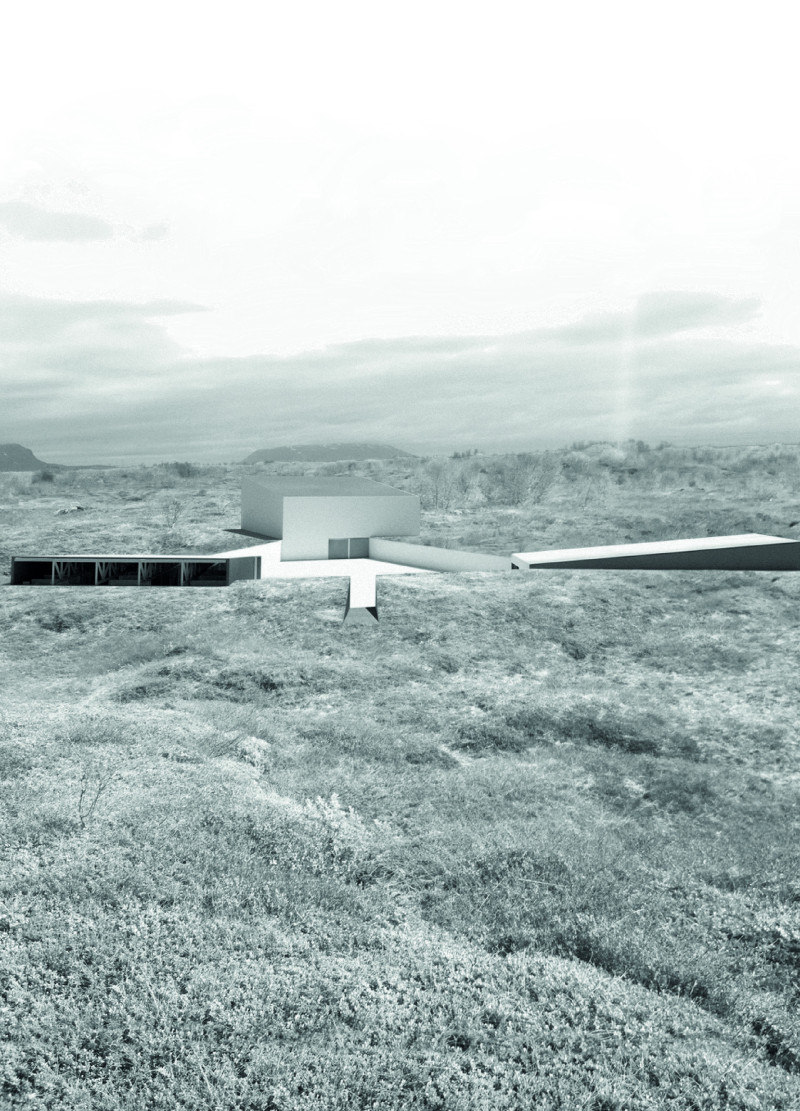5 key facts about this project
The “Three Cubes Museum The Volcano” is located near Lake Myvatn and the Hverfjall volcano, designed to connect visitors with the striking landscape. It operates as an educational facility, inviting people to learn about the geological features of the area. With a design that respects the environment, the museum carefully organizes its spaces to enhance the experience of being in such a significant natural setting.
Structure and Volume
The museum features three separate volumes, each serving a different purpose. This arrangement allows for a flexible interaction with the landscape as visitors move through the spaces. The Exhibition Hall is the tallest of the three, providing a view of the volcano and becoming a central point for understanding the region's geological history.
Central Courtyard and Spatial Layout
A central courtyard forms the heart of the museum. It acts as both a gathering place and an area to direct visitors to various parts of the building. The layout includes essential spaces such as a cafeteria, offices, meeting rooms, and an information point. Each area has been designed for easy access, encouraging visitors to explore the museum and learn about the local environment.
Natural Light and Materiality
Natural light is an important feature within the museum, enhancing the overall atmosphere. Large windows are strategically placed to bring illumination deep inside the building, helping to connect indoor spaces with the outside world. Concrete is the main material used for construction, contributing a solid and robust quality. Laminated glass is also used, allowing for clear views of the surrounding landscape from inside.
The roofs of the building’s volumes are designed to reflect the local terrain. They slope gently, mirroring the shapes found in nature. This design choice not only integrates the structure with the landscape but also reinforces the museum’s purpose of celebrating the geological features of the area, creating a deeper appreciation for the natural environment.





















































